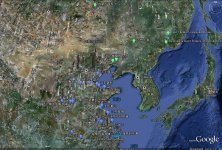Richard Klim
-------------------------
Red-faced Liocichla
Richard
Well, although Collar & Robson 2007 (HBW12) suggests that phoenicea (uncertain), bakeri and ripponi occur in a N to S sequence in W Yunnan, it's (perhaps understandably) rather vague about where the transitions occur:That sounds very neat and tidy, however:
The Liocichla in western Yunnan that I and others (pers comm.) have seen is Rippon's, NOT bakeri (Contra HBW, and Collar and Robson).
My pics are here:...
- "L. p. phoenicea – ...and adjacent N Myanmar and S China (Gongshan, in extreme NW Yunnan).
[Individuals at Gongshan, in NW Yunnan (China), of uncertain race, presumed to belong with nominate.] - L. p. bakeri – ...N Myanmar (W & S parts) and adjacent S China (W Yunnan).
- L. r. ripponi – E & SE Myanmar, adjacent S China (W & SW Yunnan)..."
Richard




